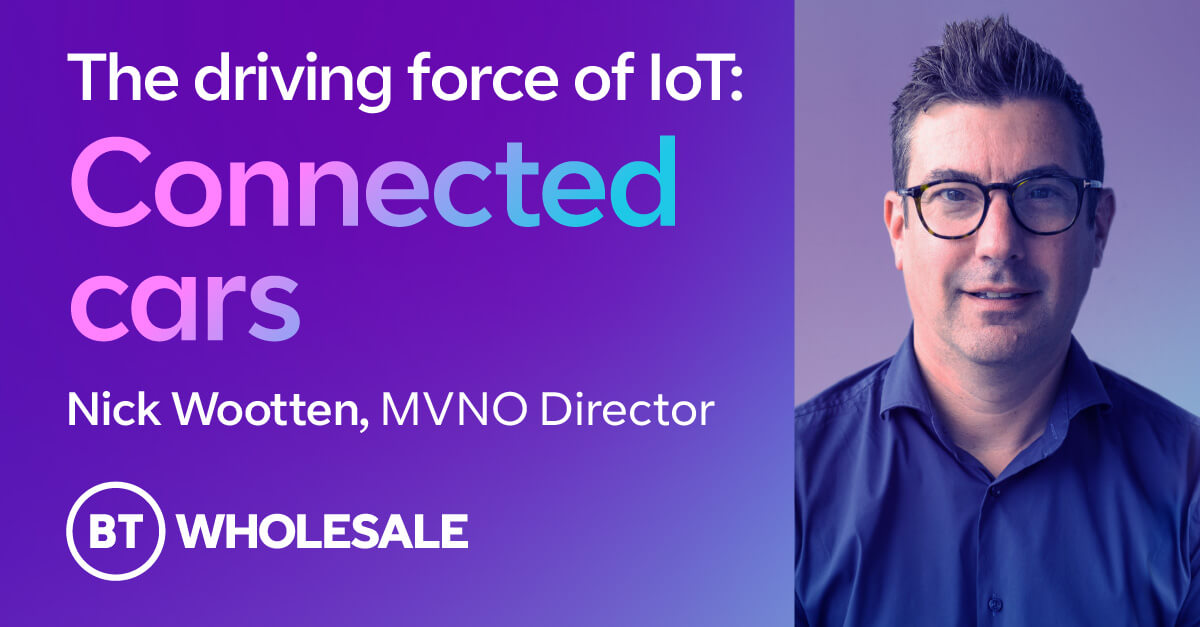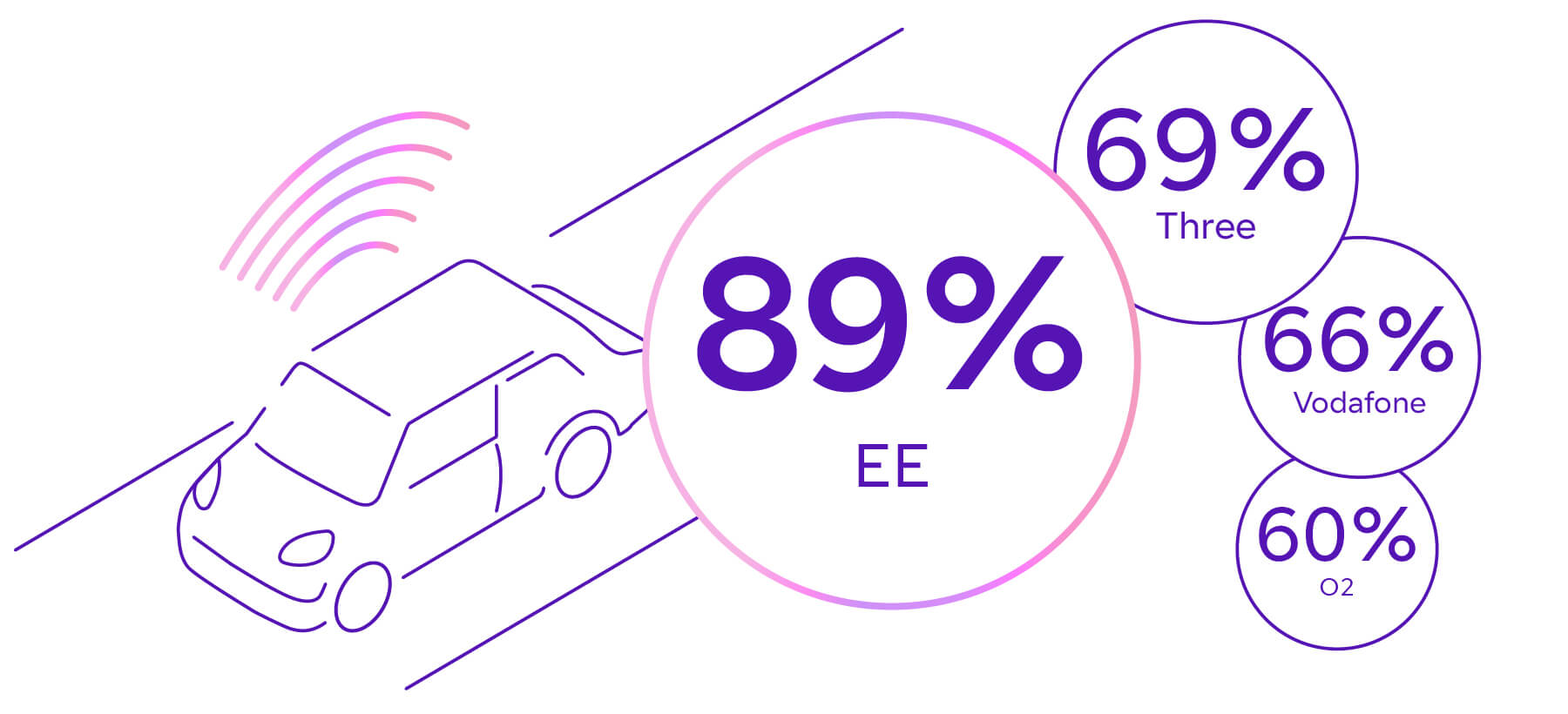INSIGHTS
The driving force of IoT: Connected cars

The mobile market landscape is undergoing significant change.
While the traditional mobile market, which caters to consumer and enterprise customers, is now largely a mature and saturated market, the Internet of Things (IoT) sector is experiencing remarkable growth year on year. One of the driving forces behind this is connected cars, which are becoming an increasingly important component in the IoT ecosystem.
In March 2023, 0.3 million new cars were registered in the UK. This figure translates directly into a massive demand for mobile connectivity as each new car requires a mobile connection to enable its full range of smart and connected features. This, in turn, provides huge opportunities for mobile network operators (MNOs) and mobile virtual network operators (MVNOs).
By recognising the potential of this booming market, operators and providers can position themselves as key enablers in the connected cars revolution, offering tailored plans and services to cater to the unique requirements of this growing customer base.
Applications revolutionising cars
I’m often asked how mobile connectivity can help create a better, safer driving experience. As the number of vehicles on our roads increases, so does the number of applications that can be integrated into them.
Applications used by manufacturers
Telemetry empowers car manufacturers with the ability to implement predictive maintenance strategies. With the use of sensors, manufacturers can harness real-time data to monitor and diagnose any potential issues. This allows them to fix the issue before the problem escalates. This proactive approach means that vehicle reliability is enhanced as well as diminishing the need for curb-side maintenance, reducing both costs and carbon emissions related to unnecessary callouts.
Similarly, over the air software updates enable drivers to keep vehicles up to date without the need to visit service stations or have manufacturers manually check for upgrades. A secure and reliable mobile network means that vehicles are always equipped with the latest features, ensuring better overall road safety.
Insurance and safety
Manufacturers aren’t the only ones leveraging mobile connectivity to monitor driving styles. Like telemetry, sensors can help insurance companies to analyse driving behaviour, allowing them to offer personalised insurance costs based on individual risk profiles.
In times of extraordinary circumstances, it’s crucial that drivers and passengers can get in contact with others. Since 2018, most cars have also been fitted with eCall systems - a major advancement in connected car applications. This emergency call system has provided invaluable support in critical situations. In the event of an accident, eCall automatically contacts emergency services and transmits the vehicle’s location, meaning response times are quicker, potentially saving lives.
All these features play a part in increasing drivers’ safety and are underpinned by mobile connectivity. That’s why it’s so important that IoT providers continue to invest in connectivity solutions.
Autonomous vehicles and robotic taxis: the future, powered by mobile connectivity
Looking ahead, mobile connectivity will continue to grow in importance for the automotive industry as autonomous vehicles become more entrenched in everyday life.
From “driverless” buses being trialled in the UK to the hope of fully self-driving cars becoming commonplace, it’s clear that as the industry pivots towards new technologies, mobile connectivity will be at the heart of making these ideas a reality.
Likewise, concepts such as the “Ubers of tomorrow” where fleets of robotic taxis can provide on-demand autonomous services which redefine public transportation must be underpinned by fast, reliable mobile connectivity.
As car applications continue to advance and mobile connectivity becomes increasingly intertwined with the automotive landscape, connectivity providers must realise the huge opportunities that await them. The potential for innovation and disruption within this rapidly evolving market is immense, setting the stage for a future where cars are not only connected but also intelligent, intuitive, and seamlessly integrated into our daily lives.
Taking things to the next level with reliable networks
It’s crucial to recognise that the success of these various use cases heavily depends on a robust and reliable network infrastructure. For example, the effectiveness of eCall is of no use at all if a vehicle has an accident in an area with no network coverage.
Similarly, the full potential of autonomous vehicles is dependent on seamless and uninterrupted connectivity, which can ensure real-time communication between the vehicle and its surroundings.
Neglecting network coverage, quality and speed can undermine the progress and effectiveness of connected car applications. There must be a comprehensive, and maybe even collaborative, approach to guarantee network reliability.
Why BT?
I’ve been part of the mobile industry for a while, and the changes keep getting more exciting. It’s obvious that mobile connectivity is the future of the automotive industry and that network capabilities are crucial in guaranteeing successful times ahead for connected cars.
But, when it comes to network coverage and quality, not all networks are created equal. EE continues to come out on top, no matter where you look.
According to data from RootMetrics, EE stands out with an impressive average speed of 58.5 Mbps. This surpasses competitors such as Three with 28 Mbps, Vodafone with 24 Mbps, and VMO2 with 14 Mbps. Open Signal's data also highlights the superior data availability offered by EE. It’s a win-win.
Additionally, Umlaut's findings reveal that EE excels in providing 4K video coverage on roads, boasting a remarkable 96% coverage, compared to Three’s 82%, Vodafone’s 74% and VMO2 at 59%. What’s more, connectivity testing on the road was measured at 89%, compared to no more than 69% provided by the other mobile network operators. In towns, the figure for EE was 82% relative to the next-best 63% provided by Vodafone.

For vehicles in particular, EE can offer an unrivalled experience. That’s why it was chosen by the Home Office to build the new critical 4G voice and data network for Britain’s Emergency Services. We also have ambitious plans for 5G rollout, aiming for 90% geographic coverage by 2028 - we already reach over 60% of the population, including rural areas. At BT Wholesale, we’re also working on improving our 5GSA offering which will deliver lower costs for wireless carriers, a better user experience, and support new use cases.
The automotive industry needs a partner it can trust to make these ideas a reality, and as EE continues to revolutionise connectivity it is clear that BT Wholesale is the standout partner of choice.
So why wait? If you would like to have a conversation and find out more, let's connect - Nick Wootten, MVNO Director, BT Wholesale.
GET IN TOUCH
Talk to us about your needs
Discuss your business needs with one of our experts, and discover how we can help you find success.


